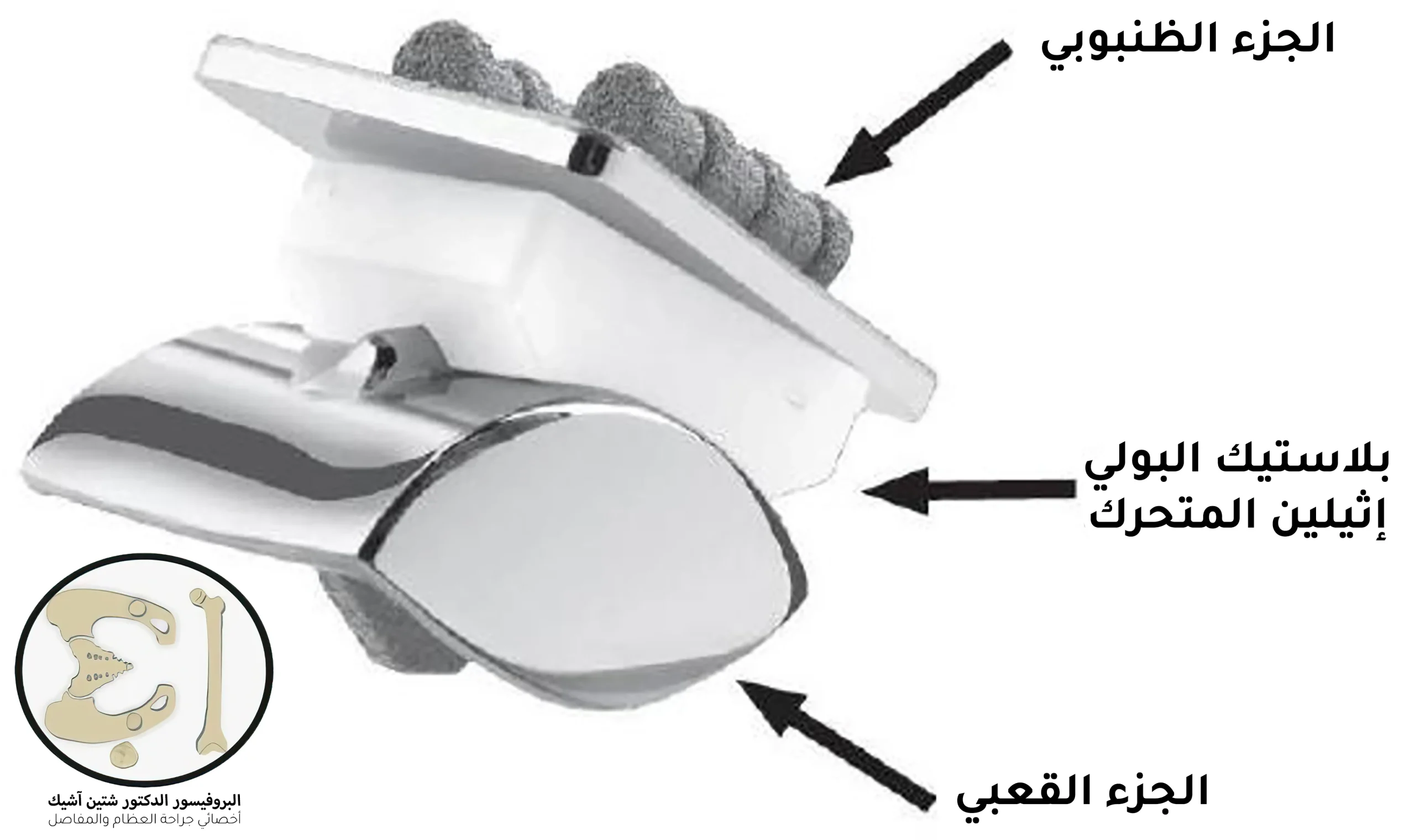What is the operation to replace the ankle joint?
Ankle replacement surgery (Ankle Replacement أو Total Ankle Arthroplasty) هي إجراء جراحي يُستبدل فيه المفصل التالف في الكاحل بمفصل صناعي حديث، بهدف تحسين الحركة وتخفيف الألم الناتج عن التآكل أو التهاب المفاصل المزمن.
هذه العملية تُعتبر حلًا متقدمًا وفعالًا للمرضى الذين يعانون من آلام مستمرة في الكاحل ولم يستجيبوا للعلاجات التقليدية مثل الأدوية أو العلاج الطبيعي.

متى تكون هذه العملية ضرورية؟
| الحالة المرضية | لماذا تحتاج إلى تغيير المفصل؟ |
|---|---|
| التهاب المفاصل التنكسي (خشونة المفصل) | يؤدي لتآكل الغضاريف واحتكاك العظام مما يسبب ألمًا شديدًا |
| Rheumatoid Arthritis | يُسبب تلف المفصل وضعف حركته بشكل متقدم |
| إصابات أو كسور قديمة في الكاحل | تؤدي إلى تشوه دائم وضعف مزمن في المفصل |
| محدودية الحركة وتيبس المفصل | تؤثر سلبًا على نمط الحياة اليومي |
مراحل عملية تغيير مفصل الكاحل في إسطنبول
- الفحص والتشخيص
يتم تقييم الحالة بدقة من خلال الفحص السريري، وصور الأشعة، والتصوير بالرنين المغناطيسي أو الأشعة المقطعية. - التحضير للعملية
تشمل تحاليل الدم، تقييم التخدير، والتوقف عن بعض الأدوية مثل مميعات الدم. - الإجراء الجراحي
- يُستأصل المفصل التالف.
- يتم تثبيت مفصل صناعي مصنوع من التيتانيوم أو سبائك الكروم والكوبالت.
- يستغرق الإجراء عادةً من 1.5 إلى 2.5 ساعة.
- المتابعة والتعافي
- الإقامة في المستشفى من 2 إلى 4 أيام.
- يتم استخدام جبيرة أو دعامة مؤقتة.
- يبدأ العلاج الطبيعي بعد أسبوعين تقريبًا.

لماذا إسطنبول؟
| الميزة | التفاصيل |
|---|---|
| كفاءة الأطباء | جراحون متخصصون في جراحة الكاحل بخبرة أوروبية وأمريكية |
| المستشفيات | تجهيزات حديثة، غرف عمليات متقدمة، عناية ما بعد الجراحة |
| التكلفة | أقل بـ 50–70% مقارنة بالدول الأوروبية والخليجية |
| سهولة التواصل | مترجمون طبيون وخدمة مرافقة للمرضى الأجانب |
| خدمات إضافية | النقل من المطار، الحجز الفندقي، متابعة بعد العودة للبلد |
تكلفة عملية تغيير مفصل الكاحل في إسطنبول
| البند | التكلفة التقريبية (بالدولار الأمريكي) |
|---|---|
| الاستشارة والفحوصات الأولية | 150 – 300 |
| التصوير (أشعة + رنين) | 200 – 500 |
| العملية الجراحية والمفصل الصناعي | 7,000 – 11,000 |
| الإقامة في المستشفى (3 – 4 أيام) | 400 – 700 |
| العلاج الطبيعي (5 – 10 جلسات) | 400 – 800 |
السعر يعتمد على نوع المفصل الصناعي، حالة العظام، ومكان العلاج (مستشفى خاص أو جامعة طبية).
مقارنة أسعار تغيير مفصل الكاحل عالميًا
| الدولة | متوسط التكلفة (بالدولار) |
|---|---|
| تركيا (إسطنبول) | 7,000 – 11,000 |
| ألمانيا | 15,000 – 20,000 |
| الولايات المتحدة | 25,000 – 45,000 |
| الإمارات | 18,000 – 25,000 |
فترة النقاهة والتعافي
| المرحلة | المدة المتوقعة |
|---|---|
| الإقامة في المستشفى | 2 – 4 أيام |
| استخدام الجبيرة أو العكازات | 2 – 4 أسابيع |
| بداية العلاج الطبيعي | خلال أسبوعين من العملية |
| العودة للعمل المكتبي | بعد 3 – 5 أسابيع |
| العودة للأنشطة اليومية الكاملة | 8 – 12 أسبوعًا حسب تطور الحالة |
Common questions
هل المفصل الصناعي يدوم طويلاً؟
نعم، معظم المفاصل الصناعية الحديثة تدوم من 15 إلى 20 سنة، وقد تستمر أكثر في حال الالتزام بالعلاج الطبيعي ونمط الحياة الصحي.
هل يمكنني المشي بشكل طبيعي بعد العملية؟
نعم، بعد فترة التعافي المناسبة والعلاج الطبيعي، يتمكن المرضى من المشي بدون ألم وبتحسن كبير في الحركة.
ما الفرق بين تغيير مفصل الكاحل وتثبيته؟
تثبيت المفصل (Ankle Fusion) يُلغِي الحركة لكن يزيل الألم، بينما تغيير المفصل يُحافظ على الحركة الطبيعية مع تقليل الألم.
خلاصة
that عملية تغيير مفصل الكاحل في إسطنبول تمثل خيارًا مثاليًا للمرضى الذين يعانون من ألم مزمن وتقييد في الحركة. بفضل الجمع بين الخبرات الطبية العالية والتقنيات الجراحية المتقدمة، تقدم إسطنبول للمريض بيئة آمنة وسلسة للعلاج، مع تكلفة تنافسية وخدمات طبية متميزة. لا تتردد في استشارة الأطباء المختصين للحصول على تقييم دقيق وخطة علاجية متكاملة.
Sources:
- Johns Hopkins Medicine
- National Health System UK
- Ortho Info
- ScienceDirect AI-Generated Literature Reviews
- Aerzteblatt.de
Common questions
Inflammation occurs, and this condition goes away spontaneously after several weeks.
Many reasons differ according to the place, as there is a pain in the joint of the foot, pain in the metatarsus after walking and when sleeping, and spraining the joint and tearing the ligaments.
Moving the ankle joint quickly or putting pressure on it is only sometimes recommended. The excessive crackling of the joint may indicate a problem that requires a medical review.
He cannot drive for several weeks due to a post-joint replacement splint.



